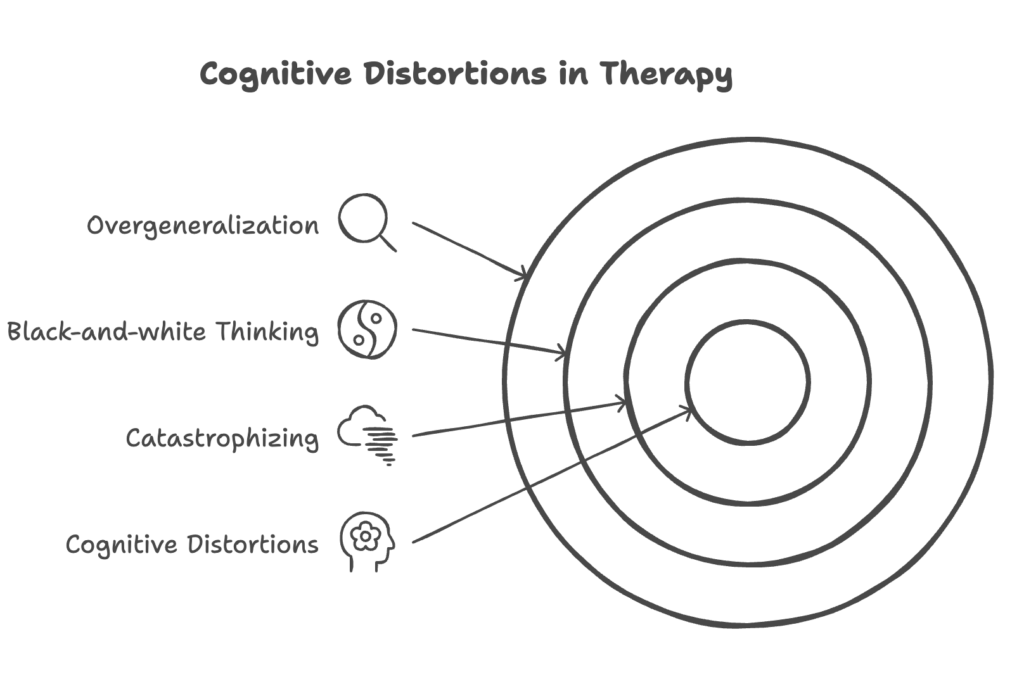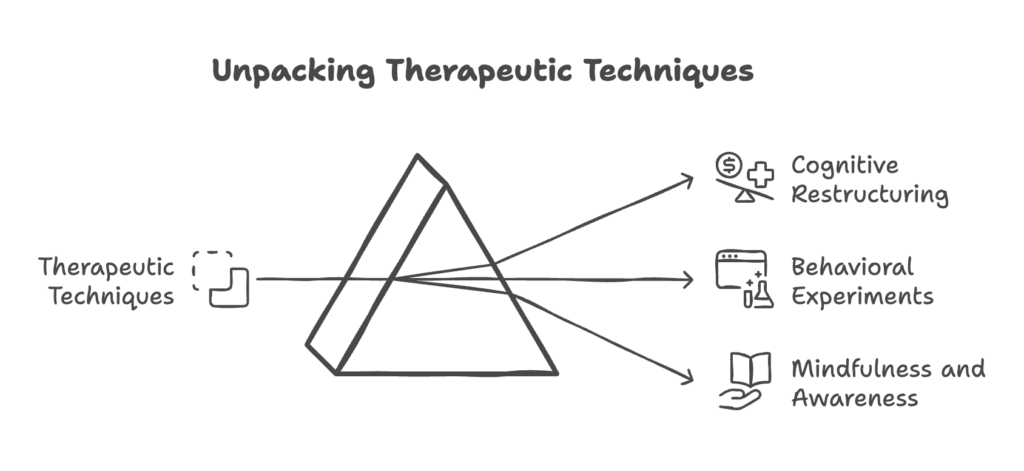Core Belief: Thoughts, Not Events, Drive Emotional Responses
Cognitive therapy stems from the idea that it’s not the external circumstances but our internal thought processes that determine how we feel. For example, consider how two people might react to the same situation—such as missing a deadline. One might think, “I’m a failure,” spiraling into guilt and self-doubt, while another might think, “This is a setback I can fix,” maintaining their composure and problem-solving mindset. This divergence illustrates how automatic thoughts—quick, habitual interpretations—play a critical role in shaping emotional responses.
Cognitive Distortions: The Saboteurs of Clear Thinking
A cornerstone of cognitive therapy is identifying and challenging cognitive distortions—patterns of irrational or exaggerated thinking. Examples include:
- Catastrophizing: Expecting the worst possible outcome.
- Black-and-white thinking: Viewing situations as all good or all bad.
- Overgeneralization: Applying one negative experience to all similar situations.
By learning to recognize these distortions, individuals can begin to see events more objectively and respond with greater resilience.

The Cognitive Triangle: Thoughts, Feelings, and Behaviors
Cognitive therapy emphasizes the interconnection between thoughts, emotions, and behaviors. This concept, often visualized as a triangle, suggests that altering one corner—particularly thoughts—can lead to significant changes in the other two. For example, challenging a thought like “I’m unlovable” might reduce feelings of sadness and foster more positive social behaviors.
Practical Applications: Restructuring Thoughts
The therapy employs techniques like:
- Cognitive restructuring: Replacing irrational thoughts with balanced alternatives.
- Behavioral experiments: Testing the validity of negative beliefs through real-world actions.
- Mindfulness and awareness: Learning to observe thoughts without judgment.

Why This Matters for ADHD Minds
As someone with ADHD, I often wrestle with impulsive, negative thought loops. Cognitive therapy offers a framework to pause, examine these thoughts, and rewrite them. For example, when I miss a task, my ADHD brain might scream, “You’ll never get it together!” Cognitive therapy teaches me to counter with, “This setback doesn’t define you—what’s your next step?”
Further Resources and Studies
For a deeper dive into cognitive therapy principles, check out the Beck Institute or explore research articles on the American Psychological Association’s website.
The Takeaway: Cognitive therapy empowers us to reclaim control over our mental landscapes by teaching us to question and transform our thoughts. It’s a principle that applies universally, whether you’re navigating ADHD, anxiety, or everyday stress.









